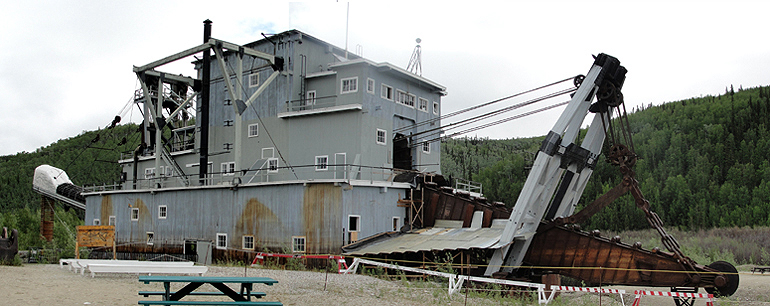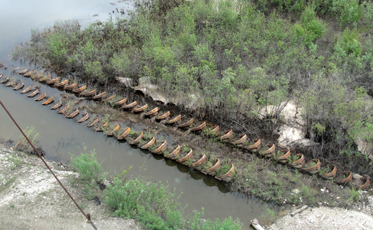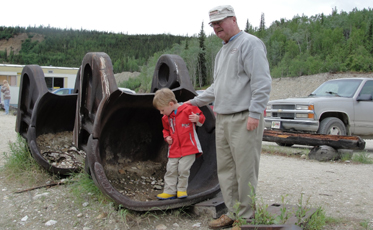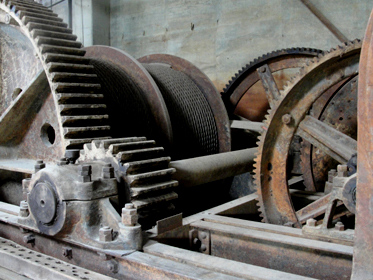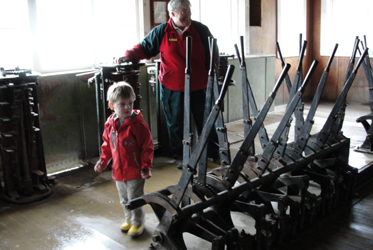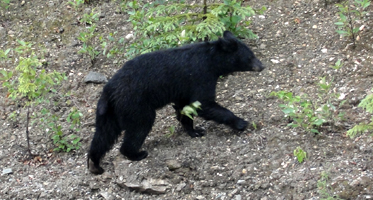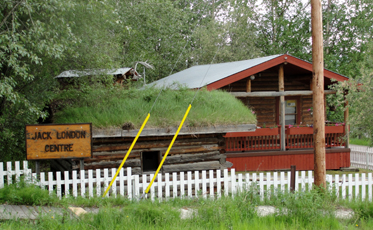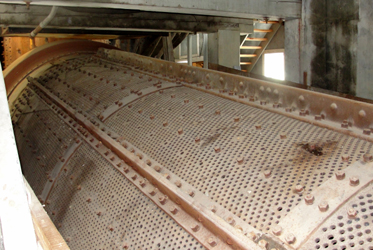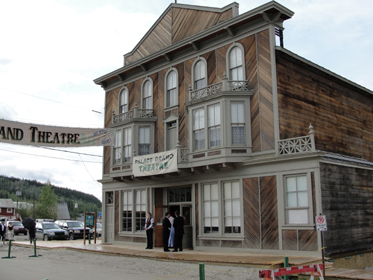More about Dredge #4
Not long after gold was discovered in large quantities in the Klondike, dredges were brought into the Yukon, the first dredge being built in the fall of 1899. One of the two dozen dredges that worked this area, Dredge No. 4 rests on Claim No. 17 Below Discovery on Bonanza near the spot where it ceased operations in 1960. The largest wooden hull, bucket-line dredge in North America, it was designed by the Marion Steam Shovel Company. Dredge No. 4 was built during the summer and winter of 1912 for the Canadian Klondike Mining Company on Claim 112 Below Discovery on Bonanza Creek. It commenced operations in May of 1913, and dug its way upstream in the Klondike Valley into what was known as the "Boyle Concession," sinking there in 1924. In 1927, it was refloated and continued to operate from the Klondike Valley to Hunker Creek. The ground at the mouth of Hunker Creek was so rich the dredge produced as much as 800 ounces of gold in a single day on Claim 67 Below. It operated until 1940. The dredge was rebuilt on Bonanza Creek valley by the Yukon Consolidated Gold Corporation and from 1941 to 1959 worked the Bonanza Creek valley.
Dredge No. 4 is 2/3 the size of a football field and 8 stories high. It has a displacement weight of over 3,000 tons (2,722 t), with a 16 cubic foot (.45 cubic metre) bucket capacity. The dredge could dig 48 feet (17 metre) below water level, and 17 feet (5 metre) above water level using hydraulic monitors and washing the gravel banks down.
The dredge was electrically powered from the Company's hydro plant on the Klondike River about 30 miles (48 kilometres) away, requiring 920 continuous horsepower during the digging operation. Extra horsepower was needed occasionally for such things as hoisting the "spud" (pivot) and the gangplank.
The dredge moved along on a pond of its own making, digging gold bearing gravel in front, recovering the gold through the revolving screen washing plant, then depositing the gravel out the stacker at the rear. A dredge pond could be 300 feet (91 metres) by as much as 500 feet (152 metres) wide, depending on the width of the valley in which the dredge was working. The operating season was an average of about 200 days, starting in late April or early May and operating 24 hours a day until late November.
The dredges were a very efficient means of mining for gold. The very fine flour gold however was very hard to save, as were nuggets too large to go through the 1 1/8 inch (1.9 centimetre) in the revolving screen of those caught in the nugget catcher. These went up the stacker and out to the tailing piles.
During the summers of 1991 and 1992 the dredge was excavated, refloated and relocated to its current position of higher ground to protect it from seasonal flooding. The project was a joint effort involving Public Works Canada, the Construction Engineering Unit of the Department of National Defence and Parks Canada. |
